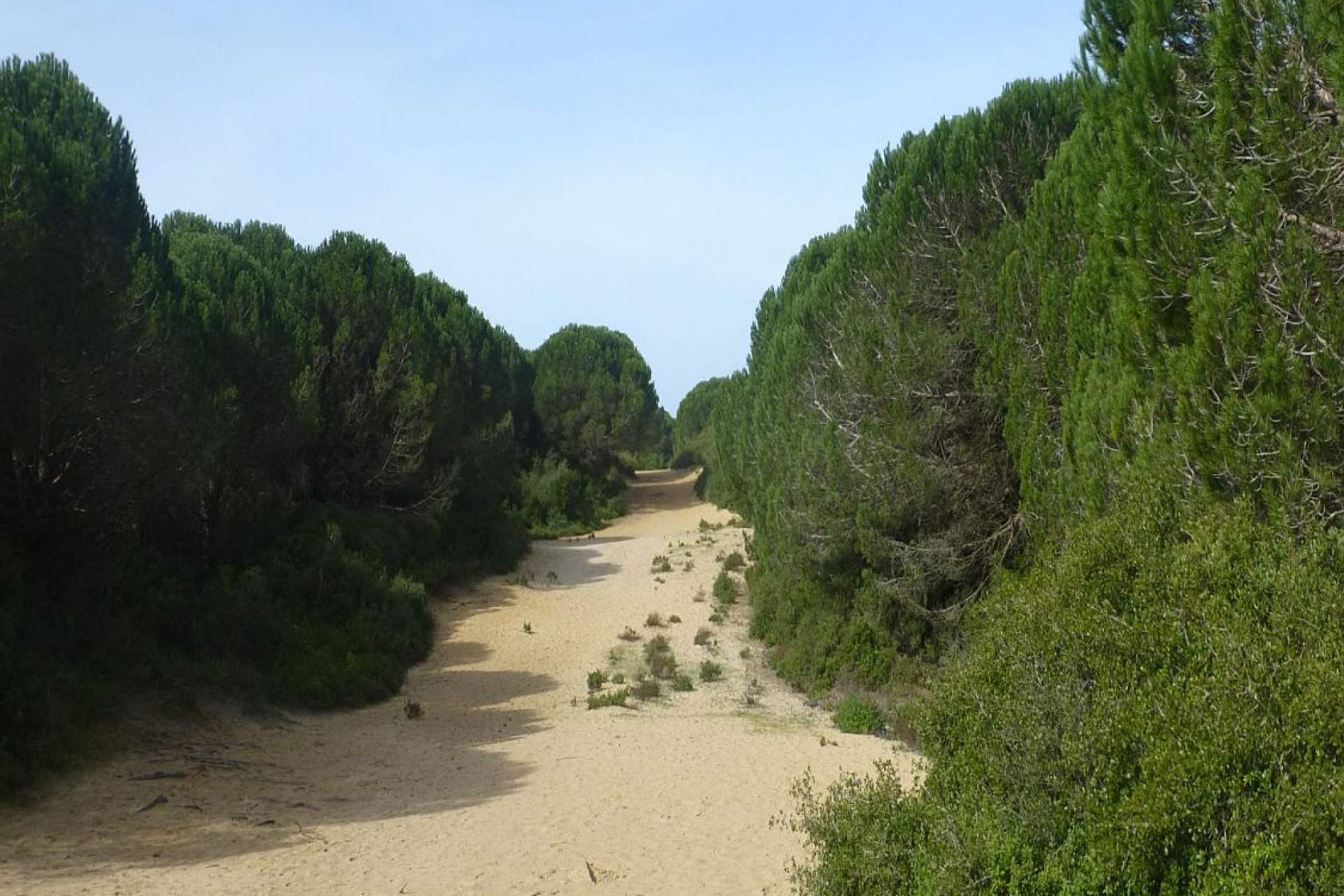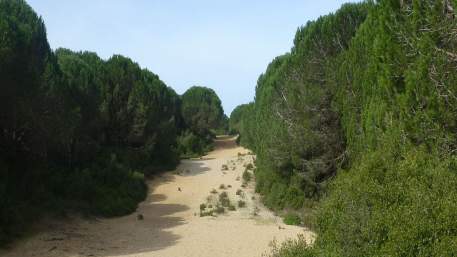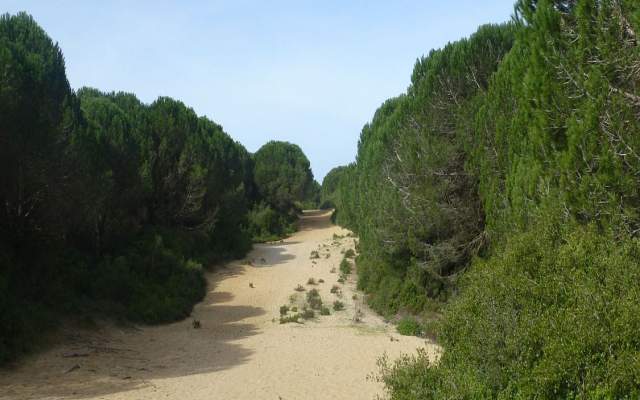
Find other trails from your selection here
Percurso Verde da Mata dos Medos - Paisagem Protegida da Arriba Fóssil da Costa da Caparica
Rede de Percursos nas Áreas Protegidas
This route starts at the Zimbral picnic park, following the green arrows in a path that the use of shoes suitable for walking in sand it´s advisable. This path allows to observe the Medos National Forest (“medos” means dunes), a quiet and calm environment where the dominant plant species is the stone pine (Pinus pinea). Under its canopy, there are several shrubs, the most important is a juniper (Juniperus turbinata), whose unusual size, together with the centenary maritime pines (P. pinaster), led to the classification of this forest as a botanical reserve. This was planted by order of King João V to avoid the advance of sand dunes towards the interior agricultural lands. The forest has isolated examples of maritime pine and Aleppo pine (Pinus halepensis). The shrub species include also Kermes oak (Quercus coccifera tolerant to dryness), mastic tree (Pistacia lentiscus), strawberry tree (Arbutus unedo), Mediterranean buckthorn (Rhamnus lycioides ssp. oleoides) and aromatic myrtle (Myrtus communis). On a lower stratum appear the salvia cistus (Cistus salviifolius), a rockrose (Cistus crispus) and the butterfly lavender (Lavandula luisieri). There is a firebreaker, a strip without vegetation, to protect forest from fires, where you can see rabbit’s dropings. At the end there is a viewpoint, from where you can see the coast as far as Sintra, as well as Costa de Caparica, beaches and woods with Jackson wattle, an invader species from Australia (Acacia saligna). Admire also the fossil cliff, so called, because it is no longer bathed by sea waters and, therefore, no longer functions as a cliff (eg a high margin on the coast). In fact, the epithet ""fossil"" has to do with this fact and not because it has fossils.
Types

Your opinion is important. Please rate your experience.
Programmes
View MoreClose
Search results for:
No results were found matching your search. We suggest changing the filters used.





